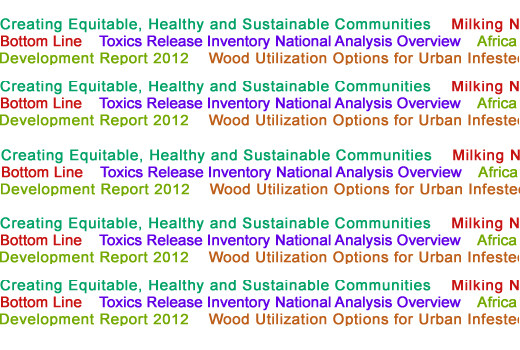US Forest Service: Wood Utilization Options for Urban Infested Trees
(www.fs.fed.us) – The introduction and spread of non-native invasive species are causing significant ecological and economic damage to U.S. urban and rural forests. The National Invasive Species Management Plan (2008) defines invasive species as a “species that is non-native to the ecosystem under consideration and whose introduction causes or is likely to cause economic or environmental harm or harm to human health.” As a result of infestation from invasive species, particularly emerald ash borer (EAB) but also Asian longhorned beetle (ALB), gypsy moth and thousand canker disease, tremendous numbers of infested trees are being killed and removed each year for control and ultimate eradication of the pests (USDA APHIS 2006). Proper utilization and safe disposal of woody biomass from these trees present considerable challenges to many local communities and landowners.
Urban forestry professionals are increasingly faced with the task of selecting appropriate utilization options for the materials and locating the necessary technical information for making such decisions. Although many studies and wood utilization projects have been conducted for wood from trees attacked by invasive species, much of the basic information on wood materials, product options and corresponding manufacturing requirements is published in numerous technical reports prepared by universities and other research organizations. While there are a number of agency websites available, no single location provides comprehensive information on wood technology, markets and technical information for hardwoods affected by invasive species.
The University of Minnesota Duluth’s Natural Resources Research Institute and the U.S. Dept. of Agriculture (USDA) Forest Products Laboratory have developed this downloadable book, Wood Utilization Options for Urban Trees Infested by Invasive Species, as a primary reference on these topics. The target audiences are land management professionals, arborists, utilization specialists and other natural resource professionals at the forefront of dealing with invasive species and their devastating effect on forest resources. The primary sections of the book are:
- Overview of Invasive Species and Utilization Options for Hardwoods
- Basic Wood Properties of Hardwoods Affected by Invasive Species
- Market and Utilization Options for Ash Logs, Lumber and Other Products
- Heat Treatment of Wood for Invasive Forest Pests
While these chapters are available as a printed book, they are also available under the utilization options tab on the EAB website: www.emeraldashborer.info. This web portal is a collaborative effort of the USDA Forest Service, Michigan State University, Purdue University and Ohio State University to provide comprehensive, accurate and timely information on the emerald ash borer to the site’s visitors. The site was created with support from the USDA Forest Service and is administered through Michigan State University (USDA et al. 2012)





























